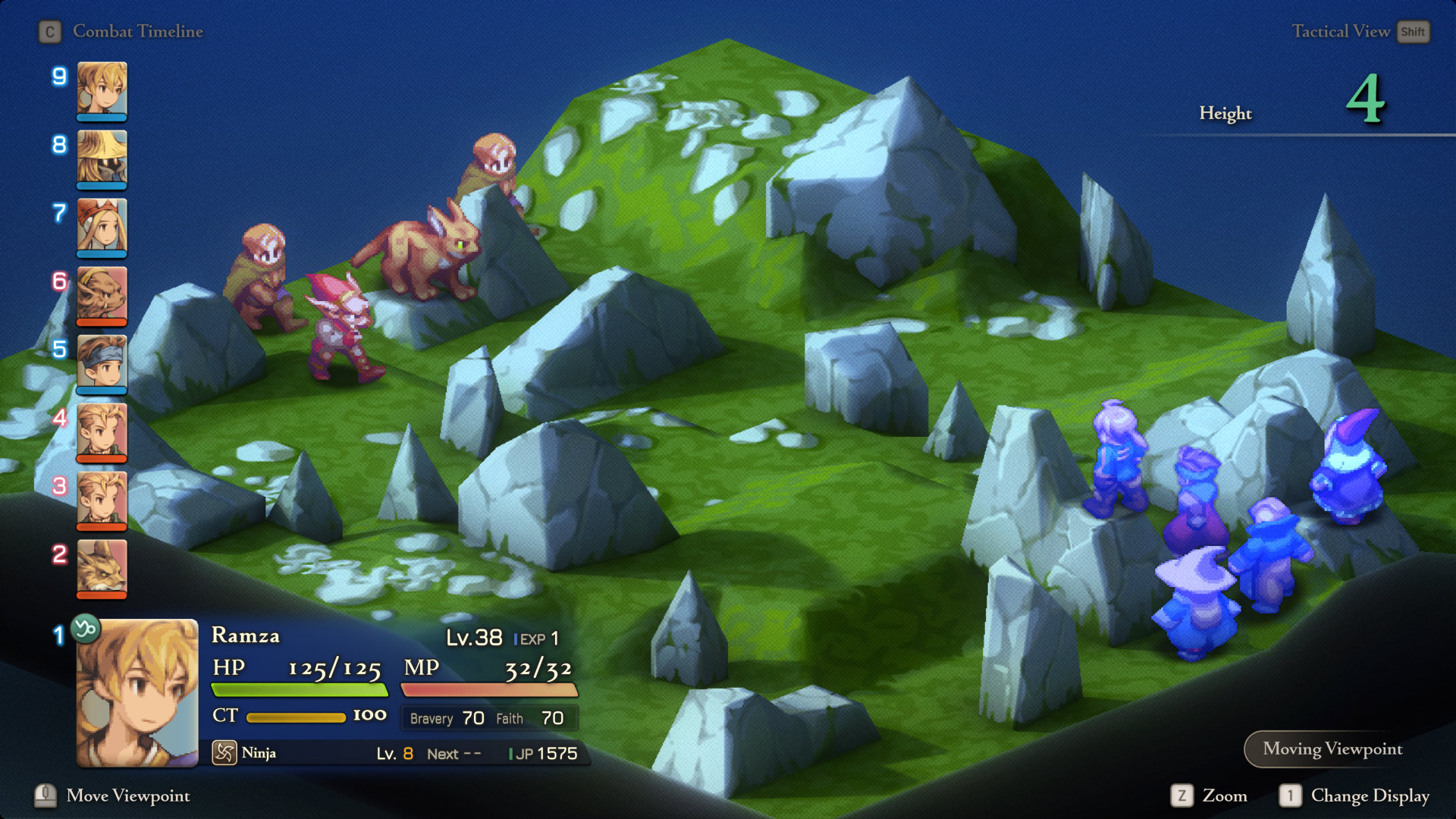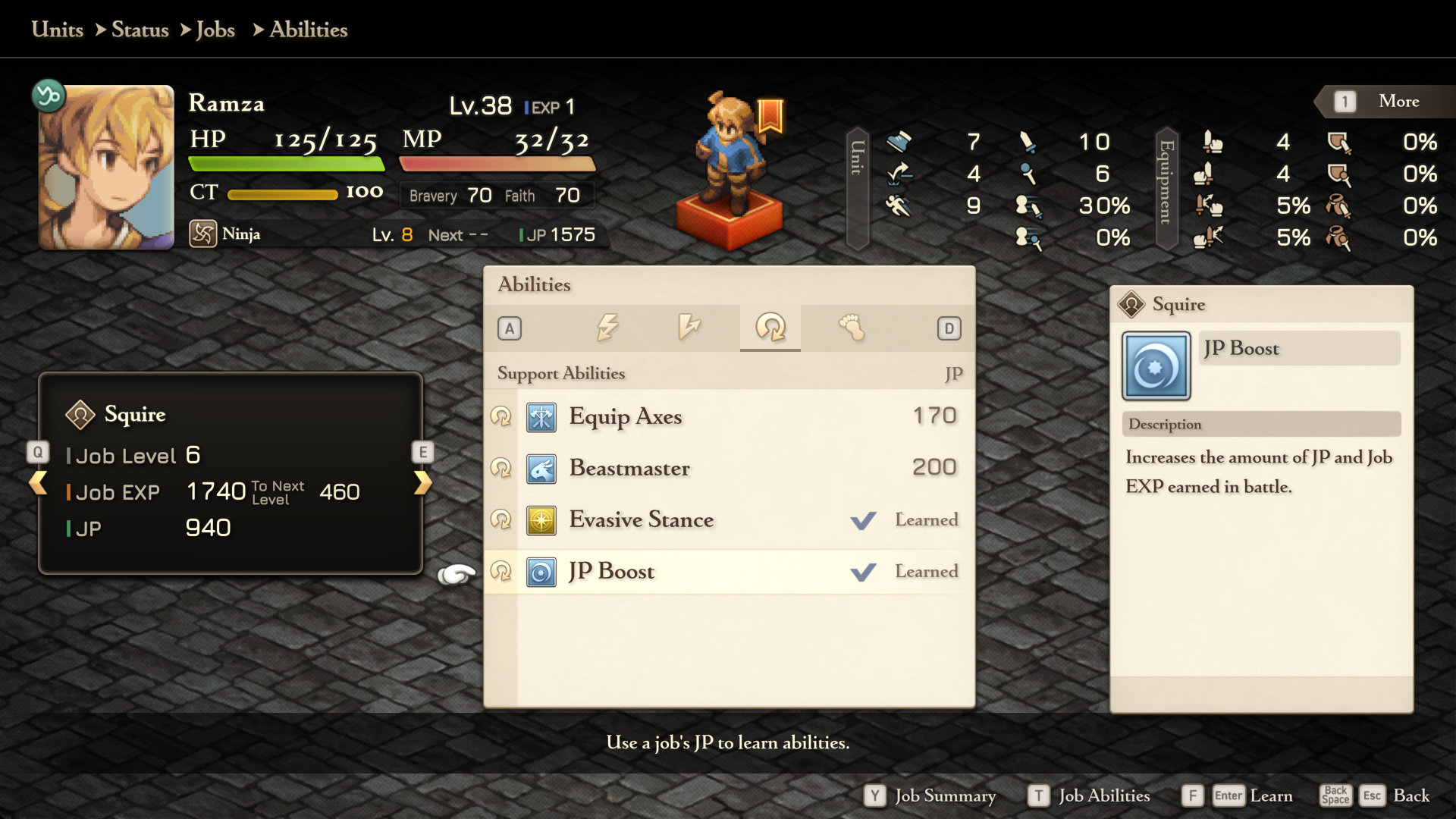I started playing Final Fantasy Tactics again, which means I have been in Mandalia Plains grinding for several hours now. Mandalia Plains is the earliest stage in the game, and one I know intimately, because you can unlock every job there if you hunker down. This is perhaps not the most enjoyable way to play, but it’s the only way I know how. I will turn Final Fantasy Tactics into a grueling grind fest every single time I play it and you can’t make me play the game any other way.
The reasons for this are twofold. The first reason is that Final Fantasy Tactics was historically unforgiving, even early on. This is a PS1 game, and one where you can soft lock yourself if you were not careful. This happened to me when I rented the first game at around age 13, and I’ve never forgotten or forgiven the game for it. My last playthrough was on a MiSTer (on a CRT next to my computer), but every time I’ve done this I’ve been very careful to make sure I had backup saves and save states. Many of your generic characters can permanently die, and so training them so they can tank a thermonuclear explosion is seductive.

The second reason is because it’s funny and the game doesn’t stop you. Tactics is a job-based RPG, but unlike many RPGs where grinding the starter zone yields diminishing returns, you really don’t have to go further than the Plains. Unlocking new jobs unlocks new skills, and the job Arithmetician (which I still call by its original name of “Calculator”) lets you nuke half the map. Successfully executing a skill gives you job points provided they land, so even a simple Squire skill like Focus is enough to level up your jobs. The Squire job can give you the JP Boost skill fairly early, which rapidly accelerates your job growth. This means you can drop your characters into Mandalia Plains, kill everything that moves except one wounded goblin or Chocobo, and then safely have your characters repeatedly power up like Goku for the duration it would take you to watch the entire Namek Saga of Dragon Ball Z. You can turn the remaining enemy into a frog and have a knight destroy their speed stat so it won’t distract your training. It is even a valid strategy early on to have your characters throw rocks at each other and have one character with the monk class use Chakra to heal and revive anyone. This is quite literally aura farming.

I’ve done this miserable slog every single time to the point where I find the entire process genuinely soothing. You can get very anal with this entire leveling system, maxing out your character by leveling them down and then re-leveling them again using a hyper specific trick in Zeklaus Desert, but to be blunt I have never cared that much, particularly when many of my characters can wipe half the board in one go.
Final Fantasy Tactics also has an entire Zodiac compatibility system for individual characters, which impacts their compatibility with each other and their efficacy against bosses, so ideally you want to do the charts of your characters before you even start. There is a structural humor in getting a bunch of teenage nerds in 1997 really into doing their character’s star charts. Ramza is canonically a Capricorn by the way, and you can’t fuck up if you go that route. There is also an entire system involving Bravery and Faith stats, the former of which Ramza can raise artificially by shouting or other characters can raise by giving each other compliments or proselytizing to each other, but there are complexities to what these stats do that are too complicated to get into here.
Though FFT has a lot of obtuse PS1 era cruft on it, its newest remaster, The Ivalice Chronicles, gives the game a much-needed rehaul. Square Enix did a beautiful job here. They have given the player the option to play the game as it was originally presented, or in a new form with a script that strikes a balance between the blunt but charming original PS1 translation and the slightly purple PSP War of The Lions script. The ability to look at the map grid from above somehow was not in the base game despite being a no brainer, and its inclusion almost feels like cheating if you’ve beaten this game before.

These are hard compromises to make on a deeply beloved game, and they somehow pulled it off. The added voice acting brings a liveliness and dimension to a deeply political story that could at times be difficult to parse from moment to moment. I’m often a purist when it comes to remasters, but The Ivalice Chronicles does so many things right that it’s the version I would recommend to new players, praise I’d previously only given to Square Enix’s loving treatment of Live-A-Live.
But even with the added quality of life and balance changes, I only know one way to play this game. This method completely fucks up the pace of the storytelling because it adds like five hours of lag time between the intro and the stage Dortor Slums. It also makes random encounters more wonky because foes scale to Ramza’s level (which is distinct from job levels) as a point of balance, but that’s moot when you can teleport behind anybody on the map and punch a hole the size of a trash can lid through their torso.
You emerge from the Plains and every member of your party has a degree in advanced math and can dual weird katanas. You’re ready to beat the piss out of any morally ambiguous enemy in your path. When you finally get back to the story missions and pound your foes into a smoking crater, you may ask yourself “Wait, what was happening in the story again?”
If this sounds entirely unpleasant, I assure you it is not. The reason I committed to doing this again despite beating this game in recent memory is because I have a Steam Deck now. Tactical RPGs have always agreed with me the most on handhelds. I lost an entire summer to Golden Sun and Final Fantasy Tactics Advance, because it’s nice to have something to keep your hands busy while you watch TV or particularly corny movies. The Steam Deck and the Switch 2 are perfect for this purpose, and it is wise that they put the remaster on both platforms.
I’m in a happy place right now: in Mandalia Plains. I'm passively rewatching the entire filmography of John Carpenter with director’s commentary. All my little characters are thinking super hard and screaming next to a confused frog that used to be a goblin until they can solve the math problems from Good Will Hunting. All of us, together, are thriving.


